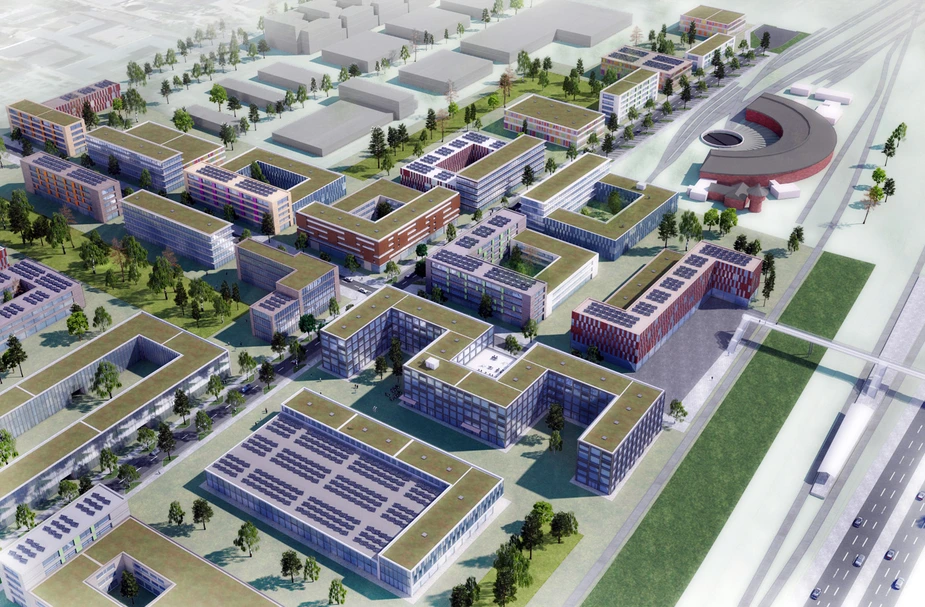Road map for the future
New commercial spaces in the so-called Gleislinse area
A vision, persistence and cooperation turn a project into reality that Berlin needs urgently: new commercial spaces in the so-called Gleislinse area. In the future, the area between the urban railway stations of Schöneweide and Adlershof will be a great source of inspiration for the entire district.
It was a hurdles race that began almost ten years ago. However, most obstacles have since been overcome and the finishing line is now in sight. Three partners – Deutsche Bahn, the Berlin Senate Department for Urban Development, and their provider, Adlershof Projekt GmbH – are livening up the 45-hectare Gleislinse wastelands. The development plan for the land with a listed roundhouse has been created and is progressing at full steam as regards providing the area with a vibrant future. There will be public roads and green spaces for companies to set up on 33 hectares over the coming years. Additionally, the Schöneweide train station will not only be accessible from two sides via a new bridge for cyclists and pedestrians, but will also be home to new buildings and a large courtyard – the Gustav-Hertz square – an urbanisation of a former “dysfunctional” location.
The preparatory work was immense: “We have built a three-kilometre-long track on the outskirts of the site”, states Wolfgang Stahnke, a Project Manager at DB AG. As a result, the Wagner-Régeny street that spans the entire length of the area can be extended to four kilometres, making the plot accessible. “A part of the area can be connected with the railway line using feeder tracks so all goods do not have to be transported by road”, says Stahnke.
The railway invested 17 million euros into developing the area. The state of Berlin contributed a further 16 million euros, 90 percent of which came from the fund for improving regional economic structure (GWR). Money well invested: “Gleislinse is currently one of the most significant commercial spaces with potential in the city. Here the big new commercial areas are currently developed, which the growing city needs”, states Dominique Sandten, a Project Manager in the Senate Department for Urban Development and the Environment. “Ten years ago, no one would have expected that there would be such high demand for commercial spaces in Berlin today”, adds Frank Wittwer, a Project Manager of the Adlershof Projekt GmbH. Meanwhile, Stahnke tells of many purchase requests. The plot sizes will be made to measure: “It’s like a meat counter. A customer can ask for as much meat as they want” says Stahnke.
On the whole, Adlershof will benefit: the northern part of the development area is connected to the centre of Adlershof. A bridge that goes over the tracks and main road will shorten the way from the Johannisthal landscape park to Köllnische Heide. The green area along the railway line is public and is one of the new homes to the protected sand lizards. The animals have had the team run off their feet as no alternative habitats with sufficient room were available for a long time. After years of searching, debates with the authorities and conservationists organisations meant that a solution was found: The sand lizards are being collected and, to create a natural habitat for them, colonized at a number of newly furbished areas in Berlin as well as at the nearby railway trail where thorne bushes were planted, sand ramparts constructed and neglected grassland seeded. The animals no longer live right in the middle of the Gleislinse. This means that there will be a new commercial centre, which has excellent transport connections.
by Chris Löwer
